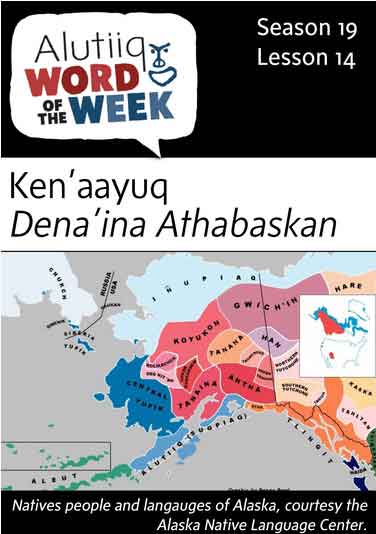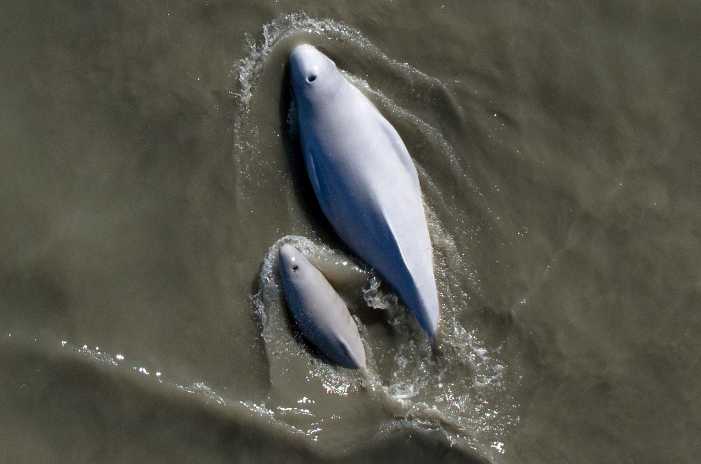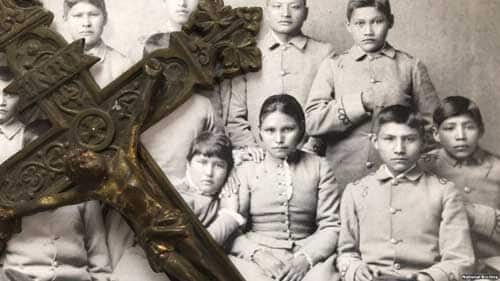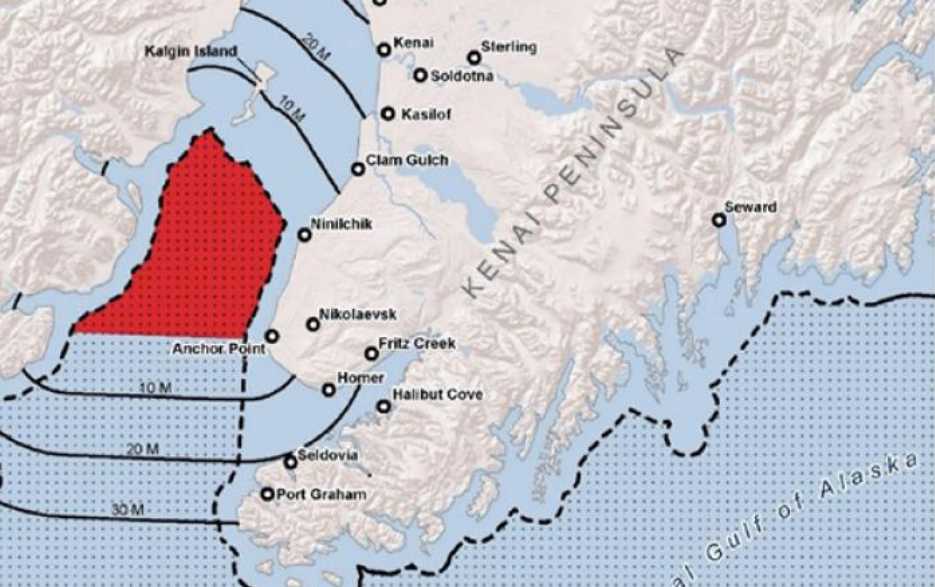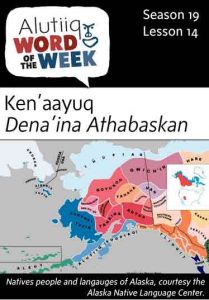 Ken’aayuq – Dena’ina Athabaskan
Ken’aayuq – Dena’ina Athabaskan
Anaanarpet Ken’aayuq. – Our aunt is a Dena’ina Athabaskan.
The Dena’ina are one of eleven Athabaskan Indian groups in Alaska. Their homeland includes the shores of Cook Inlet, interior regions of the Kenai Peninsula and the northern Alaska Peninsula, and the Matanuska and Susitna river valleys. The term Dena’ina means “the people” and it is a traditional self-designator. Alutiiq people call the Dena’ina Ken’aayuq, an Alutiiq version of a Dena’ina term that means either Kenai people or Knik area.
Archaeologists believe that the Dena’ina spread into the southern tip of the Kenai Peninsula about eight hundred years ago. Before this, the Kenai River and Kachemak Bay were home to people of the Kachemak tradition, the ancestors of modern Alutiiqs whose villages spread from the Kenai south across the Kodiak Archipelago. It is not clear whether Athabaskan societies displaced Kachemak tradition societies or whether these societies abandoned the Kenai Peninsula during a period of colder, harsher weather, leaving the region open for colonization. Some archaeologists think that Kodiak’s population jumped about eight hundred years ago. Perhaps ancestral Alutiiq families from the Kenai Peninsula migrated south, joining relatives in Kodiak.
Like their Alutiiq neighbors, the Dena’ina used maritime resources and had a ranked society. Those living along the coast of Cook Inlet harvested harbor seals with harpoons and fished for salmon. Rich men who amassed resources acted as community leaders and traded with neighboring societies. Historic sources indicate that Kodiak Alutiiqs traded for marmot and bear skin garments and perhaps pieces of copper with the Dena’ina. These sources also record that Kena’aayut married Russian and Alutiiq residents of Kodiak, becoming part of the island community.
Source: Alutiiq Museum[xyz-ihs snippet=”Adsense-responsive”]


